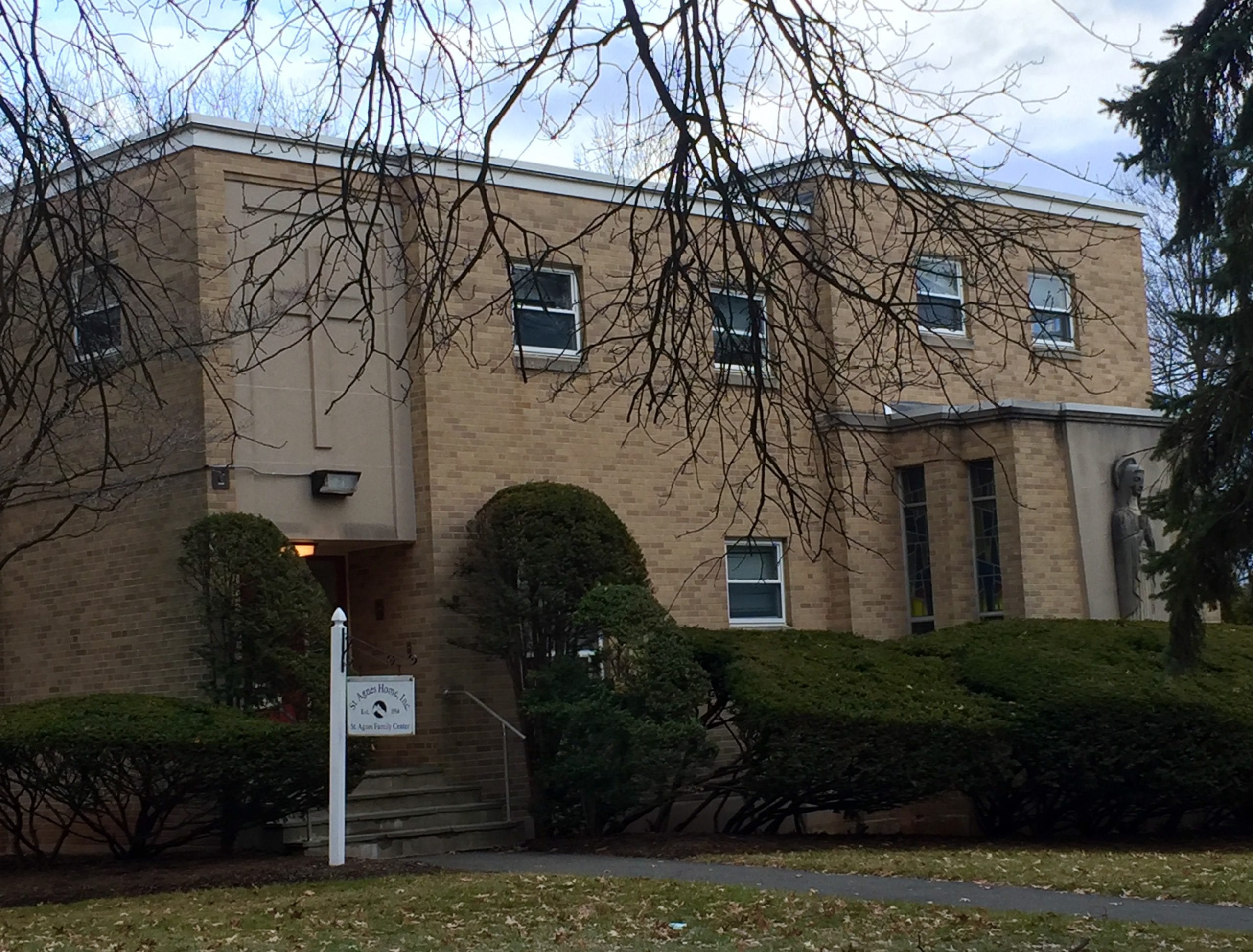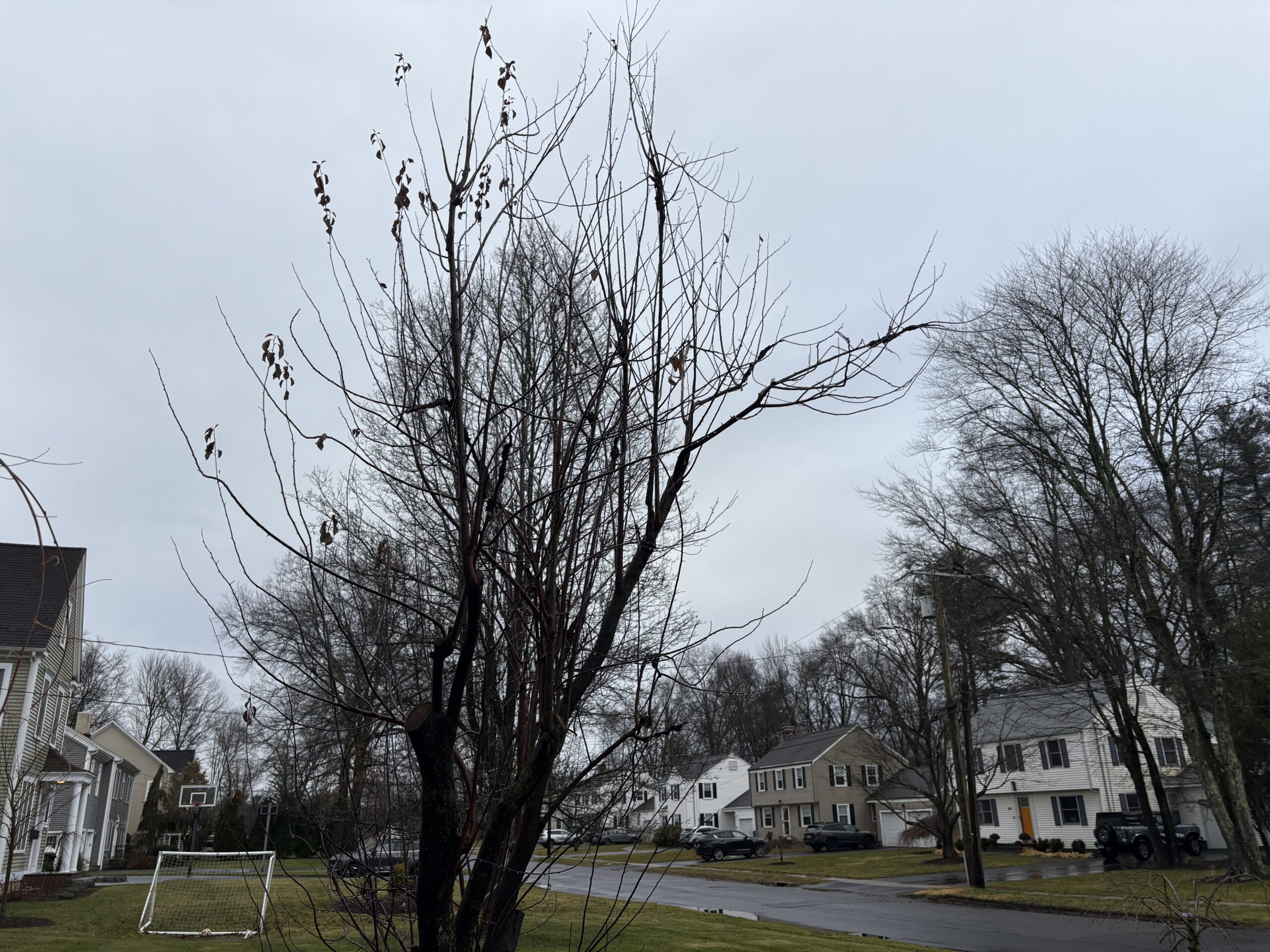St. Agnes Home in West Hartford Closing, Residents Transitioning to Other Arrangements

Audio By Carbonatix

St. Agnes Home at 104 Mayflower St., West Hartford is closing its doors. Photo credit: Ronni Newton
St. Agnes Home, a residential facility for pregnant teens as well as teen mothers and their babies, is winding down operations after more than 100 years in business.
By Ronni Newton
St. Agnes Home has been providing residential care and support for pregnant teens and young mothers with babies under the age of 2 since 1914, but by the beginning of February the last residents will have been transitioned and the facility at 104 Mayflower St. in West Hartford will prepare to shutter its doors for good.
“We’ve been transitioning over the last few months,” St. Agnes Home Executive Director Lorna Little said Monday.
Little, who has been in her role for nearly 14 years, has been well aware of the financial concerns with the facility, however, “the clear guideline for dissolution, that came Monday, [Jan. 22]” Little said. The final decision was made by the St. Agnes Board of Directors in conjunction with the Archdiocese of Hartford which is the corporat0r of the facility, she said.
“We still have an endowment, and that will go to the Archdiocese,” Little said.
The buildings and furnishings are owned by the Archdiocese, and she doesn’t know what will become of them once St. Agnes closes. St. Agnes was founded by the Sisters of Mercy in 1914, and teens and children were housed in a four-story building at the intersection of Steele Road and Asylum Avenue until 1972.
Cost-saving moves by the Archdiocese of Hartford to combine parishes and Catholic schools have made headlines lately. “I think that as a part of the system, and as we fall under the Archdiocese, everything is being reviewed,” Little said.
It wasn’t that St. Agnes had completely run out of funding, but rather that the Connecticut Department of Children and Families (DCF), which had once provided substantial financial support for the steady stream of teens it referred to St. Agnes, has gradually moved away from sending teens to a group home in favor of keeping them in a family setting.
DCF spokesperson Gary Kleeblatt said the agency used to refer quite a few teens to St. Agnes, but in recent years has changed its philosophy.
“We’ve had a lot of success keeping children with families,” Kleeblatt said. “We’ve improved our work with families and have been able to reduce the use of institutional settings by two-thirds.”
St. Agnes has had to rely on obtaining an increasing percentage of its financial support from other sources. “We’ve made it through this long because of the financial support of the Knights of Columbus and the Guild of St. Agnes,” Little said. The Knights of Columbus “Birdies for Babies” Charity Golf Tournament has over the years raised more than $200,000 for St. Agnes.
“Was it enough to fill the gap left by DCF? No,” Little said sadly. “But we’ve been able to take care of the girls.”
The funding that St. Agnes received from DCF was for the services it provided to the girls who were the agency’s clients, Little said. Other funds needed to be raised all along to support the needs of their babies or toddlers who lived with their mothers in either the main residential facility or the transitional apartment housing next door.
“We are reimbursed for the services provided to each client. Less clients referred means less money,” Little said. “We don’t have tons of money, but we have provided fiscally-sound management in tough times.”
At one time St. Agnes, which currently employs 41 people, ran a robust educational facility, but Little said that more recently the teen residents have decided to attend school, either in their home community or at Conard High School, to maintain their high school relationships. All of the recent residents are enrolled in either high school or college, she said.
“We have been creative and proactive to create new program models in conjunction with DCF, but the funding for these services wasn’t enough to provide full residential care,” Little said. “Combined with the reduction in teen pregnancy rates, we had to make a difficult decision to close a wonderful program that has provided life-changing support to young mothers and their children for over 100 years.”
Little said she believes there is still a need for a facility like St. Agnes Home, but not a willingness to pay for the service. “If the state initiative is to really have children in their homes or with families – it could be a foster family – then no matter how great the level of success, they are going to foster homes, not to us,” she said.
Just a handful of residents remain, and Little said that St. Agnes has been working with DCF to transition them to other arrangements – appropriate settings – by the end of this week. Others residents have already been transitioned.
“We’re holding DCF accountable,” Little said.
“What struck us when we told the young women is that they didn’t focus on ‘self,'” Little said. “They asked what would happen to other young mothers. They were more concerned with those that would come after them.”
St. Agnes Home employed a large number of people because at least some staff was available 24 hours a day, seven days a week, to provide various types of guidance as well as childcare while the mothers were at school or doing homework. Many employees were part time, and some have worked at St. Agnes for more than 20 years. They have been given leads to open positions in other group homes and there have been severance packages offered.
“People may see this as a group home, but we see this as a family,” Little said.
The measure of success at St. Agnes has been teaching its residents to parent a child in a healthy manner. Residents came to the facility dealing with some sort of trauma – neglect or some type of abuse – but many have done very well.
“We’re all left in a hopeful mindset – knowing we made a difference in the lives of these women and children,” said Little. “It’s ‘heart’ work.”
As for her own future plans, Little said, “I believe I will continue working in this field because this work is truly my calling.” She said her next opportunity will likely be out of state.
Once the residents have all been transitioned, the program will be dissolved completely on Feb. 28, Little said.
She had coined the phrase “raising the future” several years ago. “I leave knowing we’ve done just that,” Little said.
Like what you see here? Click here to subscribe to We-Ha’s newsletter so you’ll always be in the know about what’s happening in West Hartford!




There were many young teen girls that put their babies up for adoption through St Agnes. It would be wonderful if you would allow a web-site that either the Mother or the child could put information out there if they are interested in contacting the adopted child or the birth Mother. After many years the child may need to reach out because of medical reasons, or just because they want to know. My friend gave birth to a girl 7-27-1967, she was adopted out. My friend named her Theresa, however, the name may have changed at adoption. My friend would love to have contact with her daughter. Maybe the daughter would love to now have contact with her birth Mother.